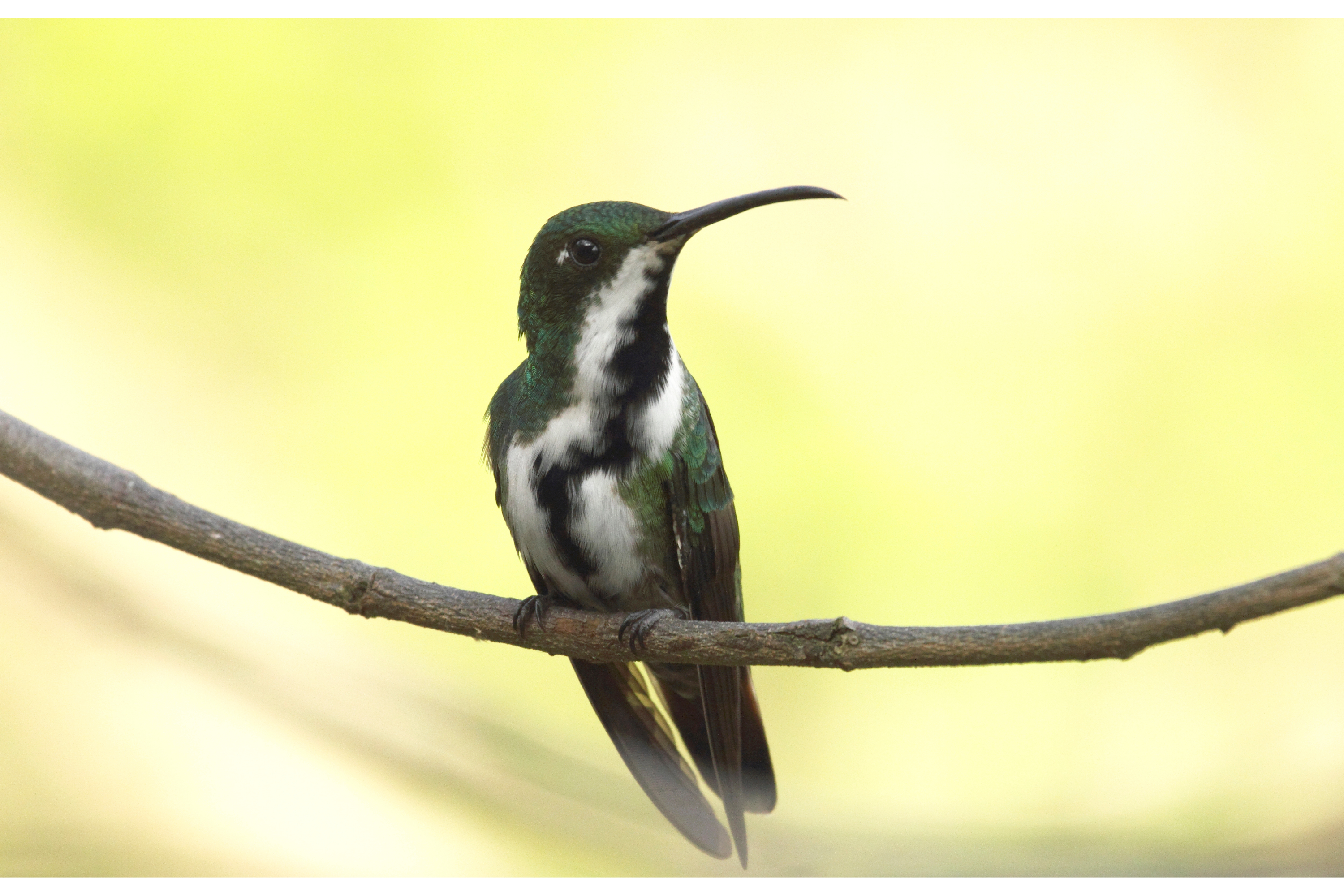Black-throated mango
(Anthracothorax nigricollis)

Description
The black-throated mango (Anthracothorax nigricollis) is a hummingbird species native to South America and Trinidad and Tobago. It is 10.2 cm long and weighs 7.2g. The longish black bill is slightly decurved. The tail in both sexes has dark central feathers, the outer tail being wine-red tipped with black. The male has glossy bright green upperparts. His throat and chest are matt black, bordered with blue-green. The flanks are bright green, and the black of the chest tapers onto the belly. The female black-throated mango has bronze-green upperparts and white underparts with a black central stripe. Immature birds show some grey or buff feather tips on the head and wings, and have brown around the eyes. The call of the black-throated mango is a high-pitched tsiuck, and the song is a buzzing hsl-hsl-hsl-hsl-hsl-hsl-hsl. It is very similar to the closely related green-breasted mango. Although the male black-throated mango has more extensive black on the underparts, this and other plumage differences are not always easy to confirm in the field because the birds appear all-black. The females of the two species can be almost inseparable, although the black-throated lacks the more extensively coppery upperpart of its relative. It breeds from Panama south to northeastern Bolivia, southern Brazil and northern Argentina. It is also common on both Trinidad and Tobago. It is a local or seasonal migrant, with some birds moving up to 1000 miles, although its movements are not well understood. It inhabits open country, gardens and cultivation. Though it will adapt to human activity, it seems less of a generalist than for example the gilded sapphire (Hylocharis chrysura) or the sapphire-spangled emerald (Amazilia lactea). The food of this species is nectar, often taken from the flowers of large trees. This hummingbird is also notably insectivorous, often hovering in open areas to catch flying insects. It appears to be somewhat picky regarding favorite foodplants and often does not visit ornamental plants popular with many other hummingbirds, such as Erythrina speciosa or Stifftia chrysantha; certain ornamental Bignoniaceae like the fountain tree (Spathodea campanulata) seem more to this bird's liking. While feeding, it has been observed to dominate over a glittering-bellied emerald (Chlorostilbon lucidus) and to be displaced by a gilded hummingbird, both considerably smaller species.
Taxonomic tree:







